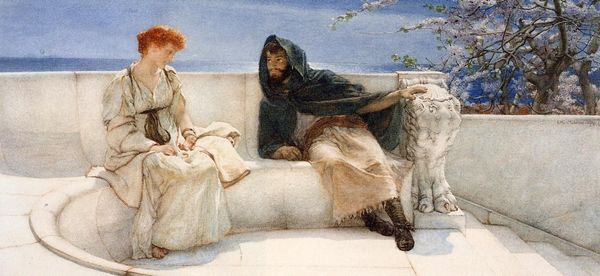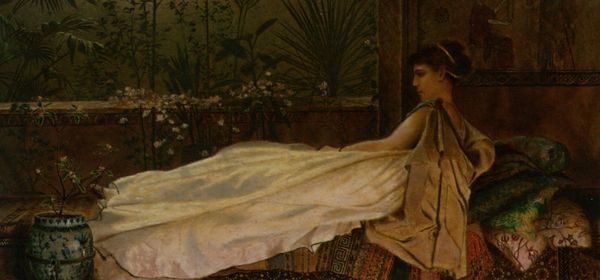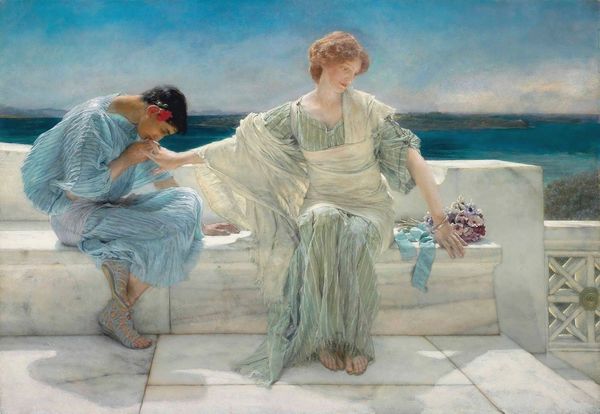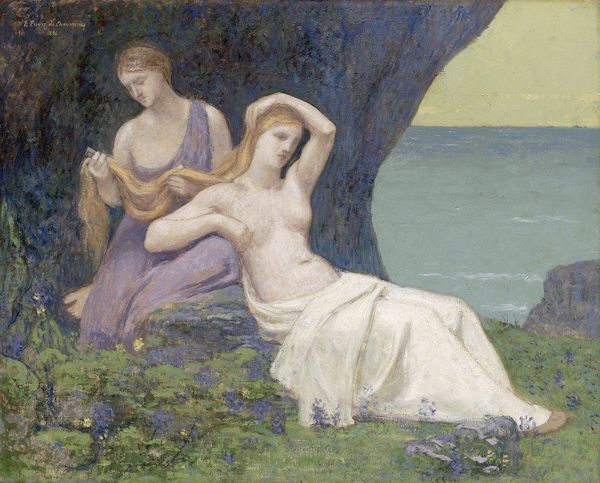
Copyright: Public Domain: Artvee
Lawrence Alma-Tadema painted these women in ancient garb with watercolor. The presence of marble is prominent, and the women are set against a classical backdrop with the ocean. The woman to the left directs our gaze to the horizon, and with her other hand she is touching her chin. Touching the chin has traversed centuries, seen in countless portraits from Renaissance masters to modern day photographs, as a symbol of contemplation. It's a gesture that transcends mere representation, tapping into a collective understanding of introspection. Think of Rodin’s sculpture “The Thinker,” which captures the weight of human thought. Across epochs, the symbolism endures, yet its interpretation evolves. What began as a marker of scholarly depth in antiquity shifts to denote pensiveness and unease. This act resonates with the psyche; a powerful force engaging viewers on a deep, subconscious level. Consider the subtle shifts in posture and expression—the emotional undercurrent that links us to our forebears. The cyclical progression of this symbol continues to resurface, evolving and taking on new meanings in differing contexts.
Comments
No comments
Be the first to comment and join the conversation on the ultimate creative platform.













